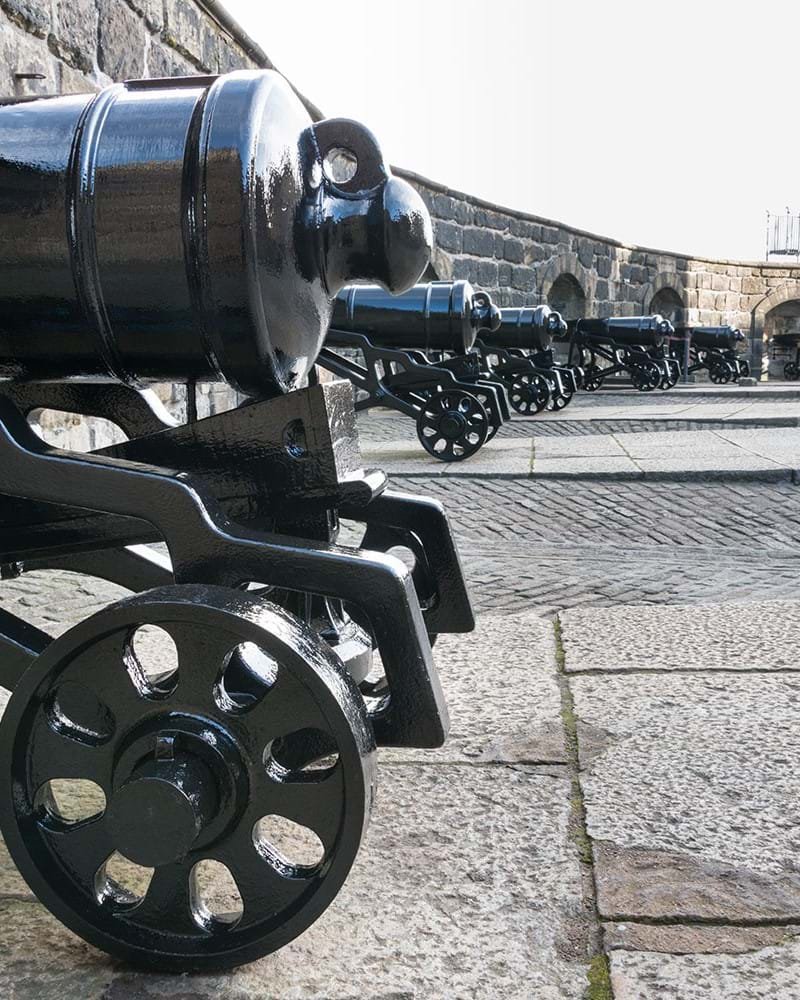Hightlight
-
 Cafe
Cafe
-
 City Centre
City Centre
-
 Events
Events
-
 Family Friendly
Family Friendly
Edinburgh Castle is alive with exciting tales of its time as a military fortress, royal residence and prison of war. When you climb Castle Hill, you will walk in the footsteps of soldiers, kings and queens – and even the odd pirate or two.
Edinburgh Castle is one of Edinburgh’s top attractions and is a must visit place when staying in the City.
Set upon its mighty rock, Edinburgh Castle’s strategic advantage is clear. Seeing the site’s military potential, Iron Age people built a hill fort on the rock. Early medieval poetry tells of a war band that feasted here for a year before riding to their deaths in battle.
As well as guarding great moments in history, the castle has suffered many sieges. During the Wars of Independence it changed hands many times. In 1314, the Scots retook the castle from the English in a daring night raid led by Thomas Randolph, nephew of Robert the Bruce.
The castle defences have evolved over hundreds of years. Mons Meg, one of the greatest medieval cannons ever made, was given to King James II in 1457. The Half Moon Battery, built in the aftermath of the Lang Siege of 1573, was armed for 200 years by bronze guns known as the Seven Sisters. Six more guns defend the Argyle Battery, with its open outlook to the north.
ROYAL RESIDENTS
Edinburgh Castle was home to kings and queens for many centuries. Queen Margaret (who was later made a saint) died here in 1093. The chapel built in her honour by her son, King David I, is Edinburgh’s oldest building. St Margaret’s Chapel still hosts weddings and christenings today.
The Great Hall, completed in 1511 for King James IV, hosted grand banquets and state events. But the king had little time to enjoy his new addition. James IV died at the Battle of Flodden in 1513, fighting English forces sent by his brother-in-law, King Henry VIII of England.
Above the door to the Royal Palace are the gilded initials MAH – for Mary Queen of Scots and her second husband Henry Stewart, Lord Darnley. Mary gave birth to James VI in the Royal Palace in 1566. He became king of Scotland at 13 months old and united the crowns of Scotland and England in 1603.
The Honours of Scotland are the oldest Crown jewels in Britain. Made of gold, silver and precious gems, they were created in Scotland and Italy during the reigns of James IV and James V. The crown, sceptre and sword of state were first used together for the coronation of a monarch in 1543, when Mary Queen of Scots came to the throne. The iconic Stone of Destiny, used for centuries to inaugurate monarchs, is also on display in the Crown Room.
There are many ways to experience Edinburgh Castle. Go straight to an exciting part, follow an itinerary, or allow an audio guide to show you around.
HIGHLIGHTS
Discover some highlights of a visit to Edinburgh Castle, from the Royal Palace and Honours of Scotland to Mons Meg and the Scottish National War Memorial
TOURS, GUIDES AND ITINERARIES
There’s a new story to discover around every corner at Edinburgh Castle.
To make sure you don’t miss any, we offer some great ways to explore this Scottish icon, including some suggested itineraries you can follow if you prefer to explore at your own pace.
EAT
Make a quick pit stop for snacks as you tour Edinburgh Castle. Or come to the castle for a meal that’s an event in itself. Afternoon tea here is a real occasion.
TICKETS
Tickets often sell out far in advance, especially over the summer months. Book your tickets online in advance for the best price and to guarantee entry. Once tickets are sold out online, there will be no further tickets available at the castle.
The Scottish National War Memorial will open at the later time of 1pm on Saturday 24 February.
The Crown Room will be closed from Wednesday 13 to Friday 15 March for essential maintenance. Admission prices will be reduced on these dates.















